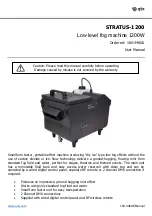
22 |
powerquilter
™
1600 Quilting Machine User’s Guide
Easy to Set Tension Adjustment
Â
IMPORTANT:
Top thread tension should be adjusted only after the bobbin case foundation tension
adjustment is made.
Puckering, gathers and thread breakage occur when the top tension is too tight. Loops and thread nests
occur on the back when the top thread tension is too loose. Tension may need to be adjusted, depending
on the fabric, thread or batting used in each project.
As you change the top tension, the value in the tension indicator box on the Main screen increases or
decreases in increments of five. When you are happy with the tension, note the top tension value for that
type of thread (brand, weight, and color) so you can quickly and easily set the tension when you use this
thread again in the future.
Unlike the bobbin case adjustment, which requires minute adjustments, the top tension knob may require
turns anywhere from 1/4 of a turn to two to four turns to achieve balanced tension.
Tighten Top Thread Tension
To
adjust the top tension tighter, turn the top thread tension knob
clockwise
.
Loosen Top Thread Tension
To
loosen the tension, turn the top thread tension knob
counter-clockwise.
NOTE:
Before adjusting the top tension, remember
to floss or pull the top thread up into the tension
discs or it will float outside the discs providing
little or no top tension. This could cause significant
tension or nesting problems on the bottom side
of the quilt. If the top tension is too loose (causing
loops of thread on the underside of the quilt) and
no amount of tightening the top thread tension
knob seems to affect it, there’s a good chance that
the thread is riding on the outside of the tension
discs and is not “flossed” between them.
A stitch is balanced
when the top thread
and the bobbin
thread meet in the
middle of the quilt
sandwich.
















































